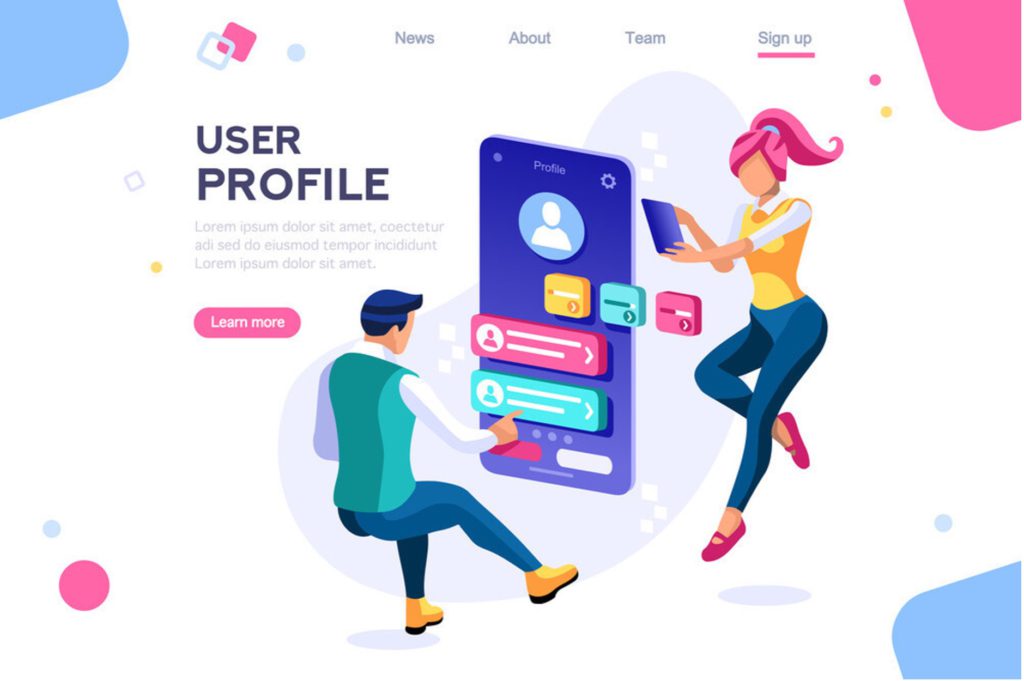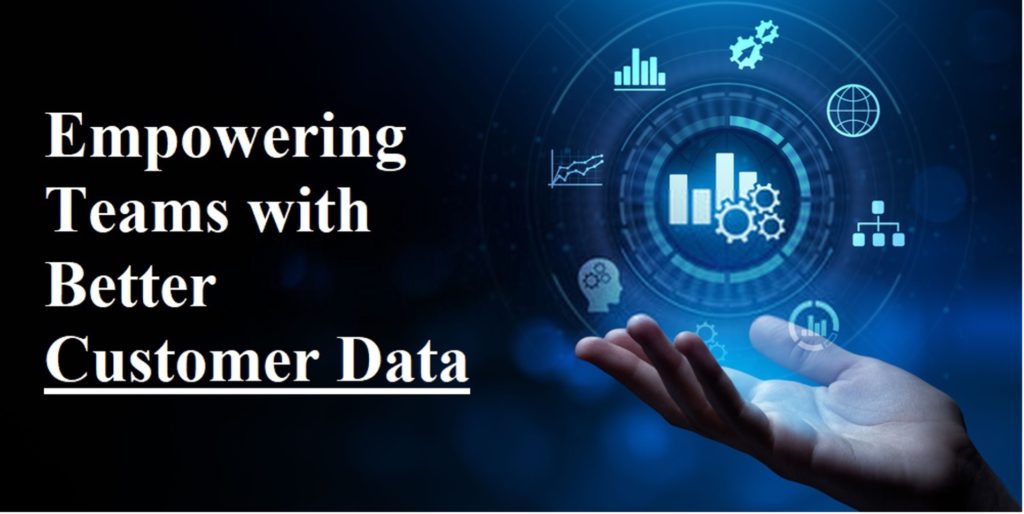Customer data is the foundation for creating more opportunities. As they say, “the more you know about your customers, the easier it will become to interact with them and get them to act.”
The practice of leveraging data to boost sales dates back to the internet. Back then, businesses sent direct mails to customers and prospects. While the strategy required a lot of effort, it worked perfectly.
Things have changed since then. Customers’ demand has become more complex due to the rise of multiple channels and devices. Almost every company today is struggling to determine the right product to offer consumers.
The problem isn’t that there isn’t enough data. Companies generate more data in one day than at any point before. Unfortunately, these data are stored in silos, with no tool to access them. Made them inaccessible across the organization.
With no technology to streamline customer data from various platforms, marketers rely on more assumptions approaches, resulting in disconnected customer experience and low customer retention.
The secret weapon to empowering your teams with better data is a Customer Data Platform (CDP). CDPs exist to help companies make the best of the data they have stored in silos.
So, What Is A Customer Data Platform?
A Customer Data Platform is a tool that collects and unifies customer data across various touch points.
Customer data are often useless if you don’t understand them. There’s a need to sort and analyze this tedious data to get insight into business operations. CDPs break down the data stored in silos. This way, marketers can have a closer look, both at the individual level and in multiples.
The integrations obtainable with Customer Data Platforms allow you to analyze data from various channels.
CDPs solve the issue of fragmented data by using predictive analysis to identify customers who make purchases. It builds profiles for individual customers by combining data from first, second, and third-party sources.

What makes CDPs unique is that it shifts control of the customer database from IT teams to marketers and business professionals.
Categories of Customers’ Data CDPs Track
Customer Data Platform is the ideal tool to improve and optimize your data-driven marketing efforts. It provides insights to understand your customer and better interact with them.
Unlike most tools in your Martech, a CDP tracks various types of first-party and third-party data. Third-party data are those from external sources, usually bought from vendors. First-party data are the data your company collects personally. Here are the categories of data a CDP tracks.
Behavioral Data
Behavioral data allows you to identify patterns in your customers’ behavior. The Customer Data Platform collects data from customer’s device usage and their interaction with your brand. Marketers would like to know how a customer came to your site and their interaction with the site. This data would help them better personalize marketing offers.
Transactional data
Transactional data provides insight into the customers’ purchase history. It consists of records of purchases, invoices, and other purchase-related data. It helps you understand your customers’ buying habits. This includes the frequency of purchases and, in some cases, their budget.
Social Media Data
This refers to raw data generated from your customers’ social media activity. It covers how they engage with content on Facebook, Instagram, LinkedIn, and Twitter. Data from social media helps when segmenting an audience, personalizing content, or ad placement.
Inventory Management Data
This relates to the volume, diversity, availability, pricing, and location of products. It can be leveraged to ensure a flawless customer journey. For instance, before a marketer recommends a product to a customer, the salesperson can check to ensure it’s in stock. Similarly, if a customer returns a product, the inventory data will help in tracking it.
Customer Service Data
Data from customer service reps provide insights into customers’ views of your company. The personal information and experiences shared also allow marketing teams better enhance engagement. For instance, let’s say a customer chats up your customer representative to complain about a product. The interaction provides an opportunity to collect data about customers’ desires from the company.

How CDP Can Ensure Better data
93% of marketers agree that the adoption of CDP would lead to better business decisions. That’s why over 73% of businesses are adopting the technology. Here’s how implementing a Customer Data Platform can empower your teams with better data.
Unique Customer View
Customers use more channels and devices – which has made it challenging to track their activities. But a CDP can collect data from various sources and unify them to create a complete view of the customer. The unified view will give you a complete picture of customers’ behavior on all platforms. For instance, if an individual makes a purchase in your online store, and then visits your offline store the next week to buy another product. A CDP will collect data from both transactions and unify it to create a single profile for the customer.
Hyper-Personalization
CDPs provide the foundation you need to meet the dynamic changes in customer expectations. It allows you to orchestrate customer acquisition across various channels. Its recommendation algorithms ensure personalized customer experiences on all channels.
The insight from CDPs benefits all departments in a company. Customer service teams need it to improve their interaction with customers. IT teams need it to resolve technical issues on the company’s websites.
More Precise Customer Segmentation
Customer segmentation is vital for profitable marketing campaigns. CDPs allow you to hyper-segment your customers. So you can target a group of customers that are likely to buy and suppress those that are unlikely.
Harmonize Omnichannel Data
Companies interact with customers in various channels, including websites, apps, emails, surveys, offline stores, and more. These channels generate a lot of data. A Customer Data Platform will collect, unify and analyze the data from all sources to create a single profile.
The single profile would allow you to track customers’ activities on all platforms. You can track their web behavior, ad impressions, purchases, and other attributes of a single customer.
Customer Data Platforms also provide actionable insights that are sent to other tools in your Martech stack.
Real-Time Optimization
A CDP will allow you to track and manage your fragmented data across various channels. You’ll be able to make real-time recommendations and adjustments based on customer journey triggers.
The availability of unified first-party data eliminates delay, reduces cost, and ensures flexibility. For instance, if a marketer doesn’t have to rely on the IT team to query segmentation data, it increases delivery speed and saves costs.
Achieve Better Budget Allocations
Insights from CDPs would allow you to identify the products that customers are interested in. You can also determine their purchase intent and how they will likely churn.
The insight would help you discover your customers’ favorite interaction channels and stages of customers’ journey. You can then use the data to optimize your marketing strategy and share advertising dollars across channels. And as a result, attract more qualified leads, maximize ads dollars, and lower customer acquisition cost.
Predict Future Customer Behavior
A CDP can predict customer behavior, which is excellent in optimizing sales. It uses predictive models that can turn a vast amount of data into smart business insights.
The insights generated acts as a guide to achieve business growth and improve customer retention.
A Customer Data Platform can help you optimize your relationship with customers. Your teams will be able to identify customer’s preferences and buying patterns from the insight generated.

Optimize Customer Experience
67% of customers think brands should automatically adjust their marketing content based on the current context. Another 66% said a brand showing irrelevant content might annoy them and make them stop dealing with the company.
CDP would change the way your teams approach customer experience. It integrates with other marketing technology to support data flow and customer management. So marketers, customer service teams, and other teams within the organization can be more responsive to customers’ needs across various channels.
Customer Data Platforms also ensure adaptability. You’ll be able to adapt to the changes in customer behavior and technological trends. It provides the tools to collect data from all sources and use them anywhere to improve customer experience.
Creating Cost-Saving Measures
Marketers lose money when they serve the wrong ads to the wrong customers. But with CDPs, they’ll be able to segment and suppress audiences from previous ad campaigns. As a result, reduce the ad dollars spent on unresponsive customer groups.
For instance, let’s say you want to exclude customers that have made in-store purchases from your retargeting campaigns. This is usually not workable as the system for point-of-sales data is different from the ad tracking system.
But, a CDP collects data from both systems to create a unified profile. So the data is then used to identify and remove such customers from the retargeting list to save advertising dollars.
As customer data grows, its management becomes more complex. With the right strategy, a CDP can connect your traditional marketing and modern channels.

